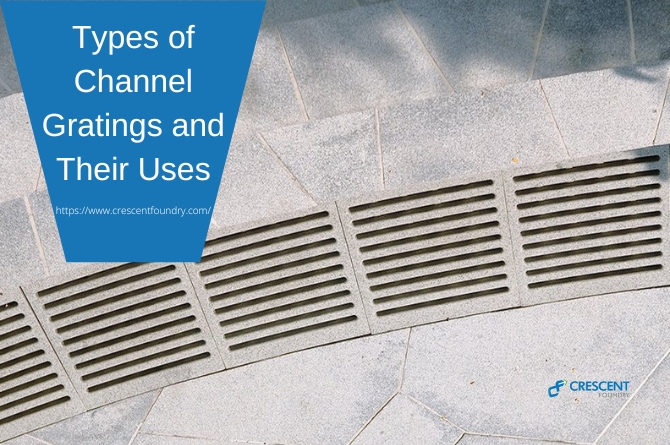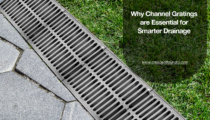Ports work as the bustling arteries of global commerce, connecting…

Types of Channel Gratings and Their Uses
The importance and functionality of proper drainage solutions for residential, commercial and industrial areas cannot be overemphasised. Stagnant or excessive water can cause significant damage to a property. As a result, several drainage solutions, such as channel and trench drains, are of much importance to transport water as well as other fluids. However, open drains or channels can be risky to people and vehicles. To minimise any safety concern, channel gratings are installed to allow water to pass through into the channels underneath, without leaving the surface wide open.
What are the types of channel gratings?
An integral part of channel drainage solutions, these gratings offer a stable surface to facilitate regular activity, besides the drainage of water, solutions and chemicals. Top channel grating manufacturers offer several types of grating styles. Let us take a look at a few.
Longitudinal Gratings
Often used in areas where there is heavy flow of water, longitudinal gratings are bars placed parallely in a metal frame. These gratings allow much of the debris in the water to pass through, because of the large gaps in between. However, these are low-maintenance as well as easy to clean.
Mesh Gratings
As the name suggests, mesh gratings are bars arranged in a criss-cross pattern. These gratings allow liquids to pass through seamlessly, however, retaining much of the solid parts. Welded at the joints, these grates offer fantastic stability and longevity.
Diagonal Slotted Gratings
Frames with diagonal bars are particularly useful in areas where the flow of water is not only high but also from several directions. Diagonal slotted gratings are a common sight around swimming pools and garden paths. Such gratings are also installed in areas where there is a slope.
Solid Gratings
Often used in areas which have a higher footfall, solid gratings are typically solid slabs which have one slit of openings for the liquid or run-off to pass through. These types of gratings are typically heavy duty and are skid-resistant.
Depending upon the accessibility, these gratings can have hinge and locking facilities. Such features offer better access for inspection and maintenance purposes. Moreover, fibreglass, stainless steel, aluminium and iron are some of the most commonly used materials for gratings.
Recommended Reading : Types Of Trench Grates And Their Uses
Uses of Channel Grates
Channel gratings are commonly spotted practically everywhere. However, the difference in design also is responsible for the usability of the grates. Below are the most common uses of channel grates.
Safety Reasons
Channel gullies have an underlying running channel that collects and transports fluids in industrial setups and dirty water in residential and commercial spaces. The gratings typically serve as inlets that allow water to flow in the gully that remains connected to the sewer system.
For industries, open channels can be hazardous and against the safety standards if left open.
Channel gullies typically run aside the length of pathways (at airports, parks, roadways) which makes it essential for them to be covered, without hindering the inflow of water or liquids.
Avoid Clogging of Drains
Often, drains get clogged due to the unhindered inflow of leaves, twigs, objects and so on. Such unwanted debris can clog the joints of the drainage channel, preventing the fluid flow. As a result, this can hamper the very function of drainage solutions. Gratings are therefore also useful in keeping away debris from clogging the system.
Seamless Functionality
Imagine having wide and open drains running across the streets. Accidents will be inevitable and traffic flow will be hindered. Impractical right? Today, solutions for drainage can be spotted on the busiest of streets. Channel gratings are designed to offer seamless functionality without interrupting the flow of traffic. With varying load-taking capability, channel grates keep the operations smooth and efficient in areas with low to the heaviest of vehicular and pedestrian activities.
Prevents Flooding
In areas with medium to heavy flow of water, gratings allow the water to pass to a drainage system running underneath the surface of grates. Without having these solutions implemented, from airports to shopping malls, parks to gardens would flood. Consequently, it would lead to surface wear offs and reduced longevity.
Top channel grating manufacturers, like Crescent Foundry, offer drainage solution variations that serve multiple functions. Besides having choices in materials such as ductile iron and grey iron, the company offers grates in load ratings that covers medium to heavy-duty applications (B125,C250, D400, E600 and F900). The effective designs ensure sure footing in wet conditions.




